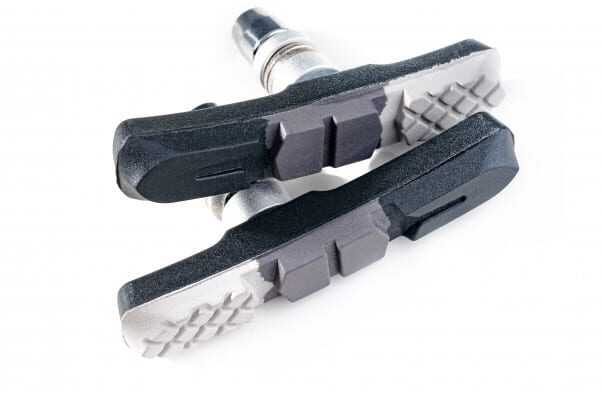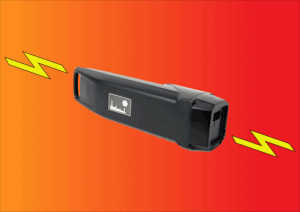
Prolonging the battery range for as long as possible may be a priority for you, if you have an electric bike. You want the peace of mind knowing that your electric bike battery is going to hold out for the rides you want to do. Not being sure if your battery is going to last the journey can give you range anxiety. This can reduce your enjoyment of the ride. Additionally, this could possibly not give you the confidence to go on the rides you want to go on, in the first place. However, if you’re looking to buy an electric bike, you may have heard of regenerative braking. This is a feature on some electric bikes that can increase battery range. But how good is it though?
Here in this article I talk about regenerative braking on electric bikes. This is to hopefully help you decide if it’s a feature you feel is worth having.
How Regenerative Braking Works
Regenerative braking reduces the amount of energy lost from the battery through braking. When braking whilst riding an electric bike, battery energy is always lost. However, regenerative braking retains some of this energy. This energy that’s lost through braking is kinetic (moving) energy, that’s turned into heat. The kinetic energy that’s turned into heat is lost to the environment. With regenerative braking though, less of this kinetic energy gets turned into heat. Instead, some of it is put back into the battery.
This retained energy in the battery is available to be drawn upon for the rest of the battery’s charge. So this is how regenerative braking helps to increase range.

How Much Energy Does Regenerative Braking Give Back?
Even though regenerative braking helps prolong battery range, you may be wondering how much by though? This is likely to be the deciding factor as to whether you opt for an electric bike with regenerative braking. The truth is that regenerative braking does not significantly increase your battery range. However, the amount that it does add though, could possibly still be enough for you.
Realistically, you can expect to get back up to 5% of your overall charge of your electric bike battery with regenerative braking. So if your battery would normally give you 30 miles range, then you can expect to get an extra 1.5 miles. So you may question if regenerative braking is worth it for an extra 1.5 miles. This could be great for you though, if you just want electric assistance for as long as possible on rides. In which case, you may deem 1.5 extra miles of electric assistance better than nothing.

Regenerative braking doesn’t retain large amounts of energy for electric bikes because there’s only so much kinetic energy in the first place. Electric bikes do not carry enough mass and aren’t going fast enough to create enough kinetic energy (momentum) for large conversions. By conversions, I mean converting kinetic energy that’s normally lost to heat, back into the battery as usable energy. Regenerative braking is therefore more effective on electric cars.
Electric cars, by the way, can retain between 10 and 15% of the battery’s charge. This is because electric cars are heavy and fast enough to recapture the energy lost through braking at higher percentages.

Also, only so much of the electric bike’s battery energy is lost through braking. Energy/battery charge is also used up on electric bikes through air resistance. Regenerative braking will not recapture any lost energy through this. You can minimize air resistance though, by riding in an aerodynamic position and/or wearing lycra. So you can increase your electric bike battery range by doing this instead of, or as well as having regenerative braking.
Prolongs the Brake Pads Life (Minimizes Wear)
A particular advantage with regenerative braking is that it reduces brake pad wear. So this helps prolong the lifespan of your brakes. As a result, this is a common reason why many riders like having regenerative braking on their electric bikes. This is even though regenerative braking does not significantly add to your electric bike’s battery range.
The reason why regenerative braking minimizes brake pad wear is that it allows the bike to slow down, without you having to fully engage the brake levers. So the pads will not be pressing as hard against the rotor or disc, if you’re not pressing the levers as hard. Therefore, the less hard the pads are pressing, the less heat they’re generating. This means less pad wear and a prolonged lifespan for the pads.
 A pair of brake pads
A pair of brake pads
With regenerative braking, the motor is helping to stop the bike in addition to the bike’s regular brake system. This is why it is able to slow the bike down without you having to fully engage the brake levers. So regenerative braking works similarly to engine braking when driving a car. Engine braking by the way, is when you slow the car down by shifting down through the gears.
With regenerative braking, it is possible to slow the bike down to a stop, without the pads touching at all. You would still need to press the brake levers enough to engage the regenerative braking though. Regenerative braking’s ability to minimize brake pad wear is very beneficial if you often ride down long descents.
Can Help Enhance Braking Performance
Regenerative braking can help improve the stopping power of your brakes. The reason for this relates to how regenerative braking reduces brake pad wear. Remember that regenerative braking allows for electric bikes to slow down without the brake pads needing to press as hard, which reduces heat. So this reduces the likelihood (during braking) of excessive heat generation where the pads make contact. Excessive heat will reduce the brake’s effectiveness.

Additionally, the fact that regenerative braking helps reduce brake pad wear in itself, enhances braking performance. The more well maintained the brake pads are, the better they will perform. There’s even the fact that if you were to fully engage the regular brakes, you also have the motor braking from the regenerative system in addition.
It’s worth bearing in mind that good braking performance is particularly important on electric bikes. This is due to the fact that electric bikes usually need more stopping power than regular bikes, to stop over the same distance. The reason being is that they carry more weight and can go at higher speeds. The extra weight of electric bikes is due to the battery and the motor. This extra stopping power that regenerative braking can give is particularly beneficial if you have an electric cargo bike. As you may gather, the more cargo you have, the more weight and the more stopping power needed.
Electric Bike Requirements for Regenerative Braking
Electric bikes do need certain more sophisticated parts to allow for regenerative braking. This therefore drives up the cost of the electric bike if you have regenerative braking
For starters you need a controller that has regenerative capabilities. These are a little bit more expensive than regular controllers. You also need a battery that can handle regenerative charging. Most batteries can do this though. However, you still need your battery management system set up to allow for charging through regenerative braking. If it isn’t then this can cause complications.
 Electric bike battery
Electric bike battery
You Need the Right Type of Motor
To have regenerative braking on an electric bike, you need a gearless direct drive motor. This is one of the main reasons why it’s not that common for electric bikes to have regenerative braking.
These gearless direct drive motors can always generate electricity when you engage the brakes. This is why they are suitable for regenerative braking. These motors do tend to be larger and heavier than other types of electric bike motors though. So they will add more weight to the electric bike. They also give extra rolling resistance. This means you’re going to get some mechanical resistance if you’re ever pedaling with the electric motor off. This will make pedaling without the motor more difficult than a regular bike. You’ll also experience this resistance as well if you’re ever freewheeling
By the way, geared motors and mid drive motors are not able to accommodate regenerative braking.

You Need to be Using the Motor for Regenerative Braking to Work
This may be obvious to some, but you have to be currently using the motor for the regenerative braking to work. So you will either need to be using pedal assist or engaging a throttle for the motor to be working.
What Does Regenerative Braking Feel Like?
Regenerative braking is seamless in the riding experience. You will likely forget it’s happening at all. Additionally, you may even notice gentler acceleration from the direct drive motor compared to a bike with a geared hub motor.
Can Generate Heat in the Battery
Regenerative braking creates a significant amount of heat in the battery itself when charging. This is particularly the case if using regenerative braking down long descents. Here, a lot of current is being pushed back into the battery for a prolonged period. Heat is not good for lithium-ion batteries. These, by the way, are the most common battery type for electric bikes. Heat contributes towards shortening the lifespan of the battery.
Alternative to Regenerative Braking
As an alternative option for regenerative braking you could opt for a range extender. This is a power bank that you can add to your electric bike. It charges your battery when the electric motor is not in use. This could be if you’re freewheeling down a hill, or if you’ve stopped for a break. You would need an electric bike that can accommodate one of these though. They are usually mounted on the electric bike where a drink holder would normally go.

These range extenders are able to extend your battery range more than regenerative braking. In some cases they can add up to 75% to your range, depending on how much you’re prepared to pay. You could use both a range extender and regenerative braking to extend your range. This does depend on if your electric bike allows for both these options though. Do be careful however, if you’re thinking of getting a range extender. Depending on the manufacturer, they can void your warranty.
If you really want to maximize your electric bike battery range, you can always opt for as big a capacity battery as possible. My article “How to Choose the Right Electric Bike Battery” talks about battery choice at length. There are also plenty of further actions you can take, to maximize your battery range. I discuss these in my article “How Can I Increase My Electric Bike Battery Range?“.
Conclusion
Whether or not you want regenerative braking for your electric bike, will come down to if you feel it’s worth it.
A lot of the time it’s advertised as a marketing gambit, as this great feature that will increase your electric bikes battery range. However, as discussed above, it does not give any significant gains in range. So you may not deem regenerative braking worth the extra cost for a little extra range. Nevertheless, it still does give some extension to the range you get from your battery. This extra range could be enough for you personally to make it worth it. If regenerative braking gives you an extra mile of battery range, that could be the extra mile you need.
As mentioned before, regenerative braking reduces brake pad wear and enhances braking performance. These reasons alone are why many people opt for regenerative braking for their electric bikes. Some riders view the fact that it adds a little more battery range as a bonus.
Like many things though, if you’re curious about regenerative braking, it’s a matter of weighing up the benefits you feel you’ll gain from it, against the disadvantages.